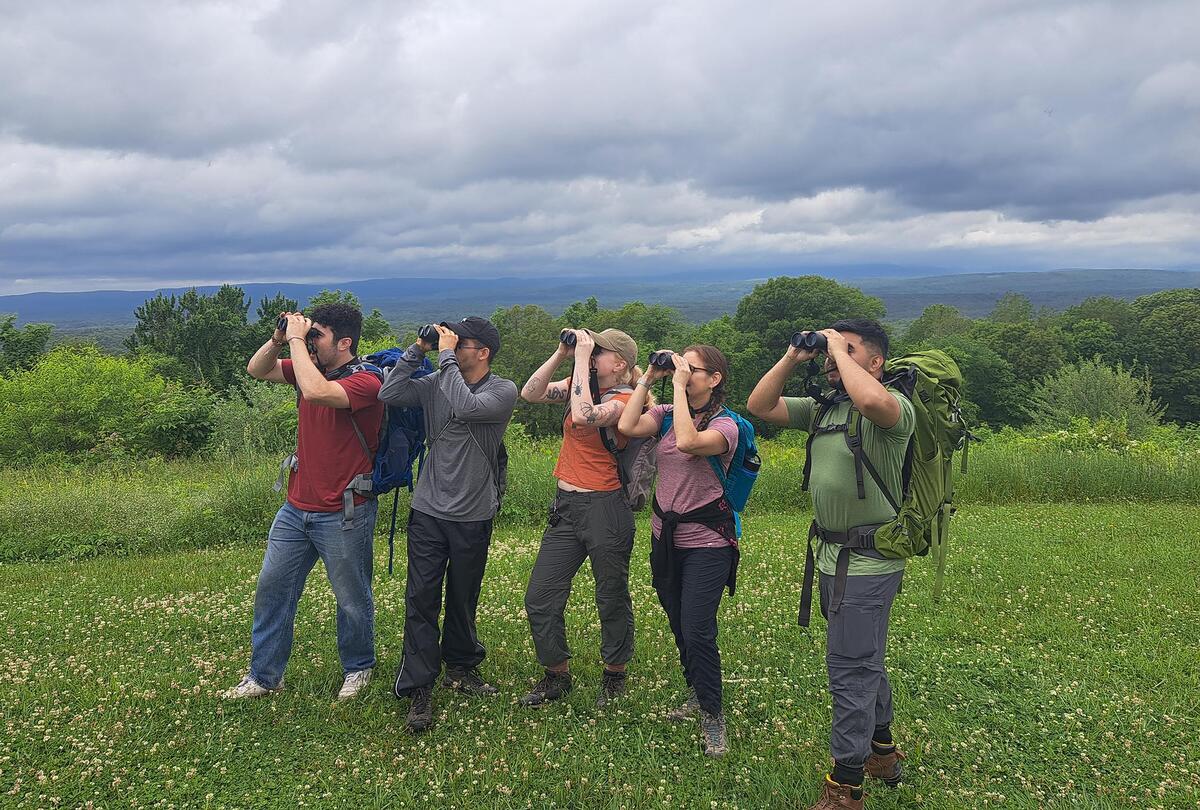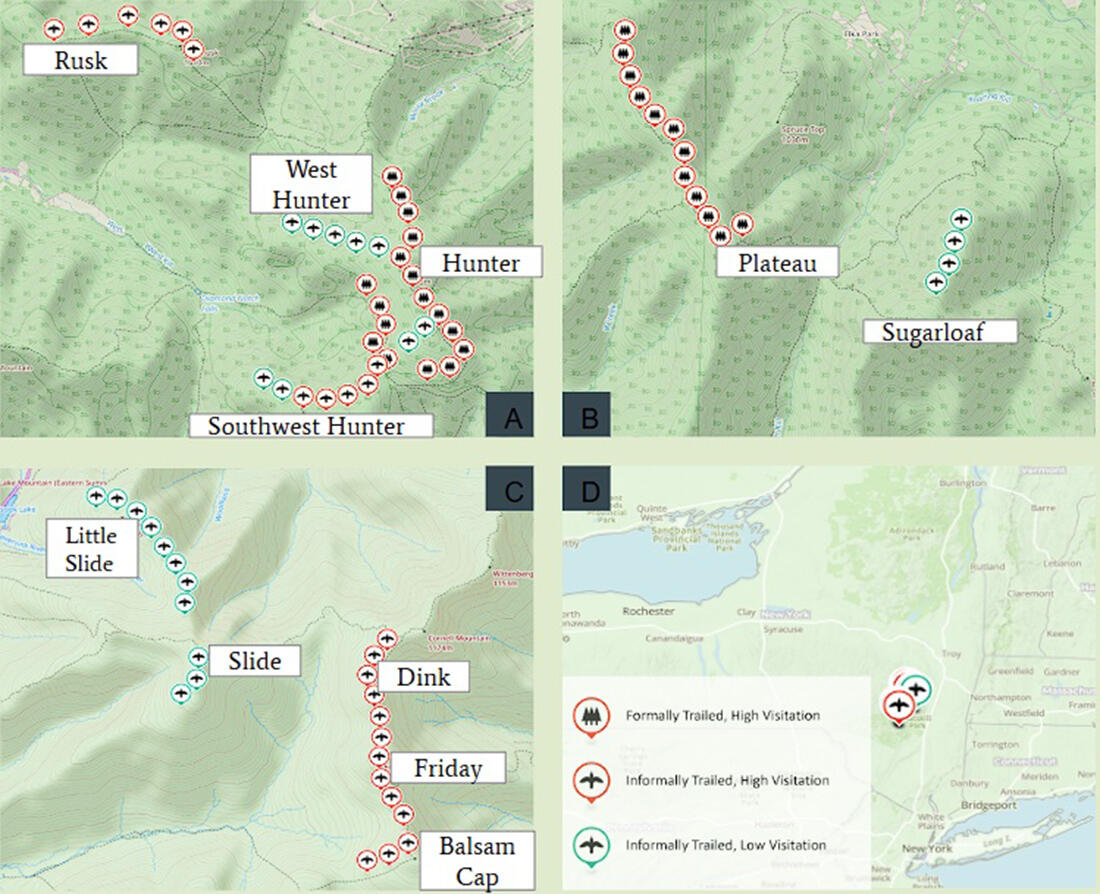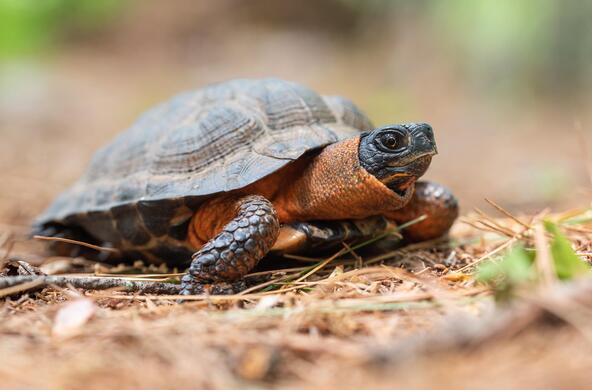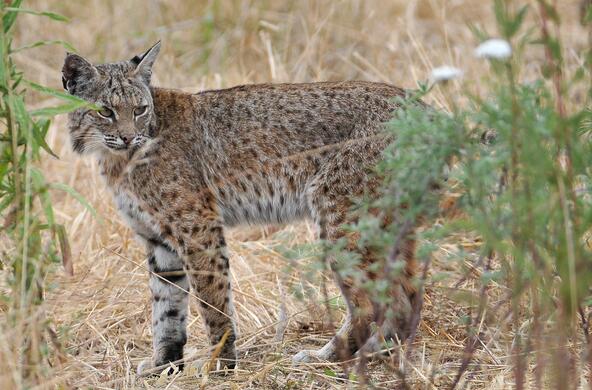Andres Barragan was a 2024 participant of the Catskill Science Collaborative Fellowship Program, coordinated by Cary Institute of Ecosystem Studies.
This summer, I had the pleasure of being chosen by the Catskill Science Collaborative Fellowship Program to work on the 2024 Catskill Montane Birds and Trail Survey. Our team set out to understand how bushwhacking and off-trail hiking is impacting birds who nest on mountain peaks. This was my first research experience post-undergrad and my first taste of doing field research. It involved hiking, camping, and counting the species of birds that live on the peaks of the Catskill Mountains in New York State.
Montane birds make their home in the spruce-fir forests found on the Catskill high peaks (approximate elevation: 3,000-4,000 feet). These forests are different from what you’ll see lower on the mountain, as the plants and trees here are better suited for the harsher conditions and cooler temperatures at higher elevations. Many migratory songbirds rely on these scattered islands of habitat in the Catskills and other mountain ranges in the Northeastern US and Canada. During summer, these birds take advantage of the plentiful food available to them and are busy singing to attract mates and defend territory, and raising their babies.

Unfortunately, these forests in the Catskills high peaks are dwindling and so are the populations of montane birds, such as Bicknell’s thrush, that rely on this habitat for its breeding grounds. Rising temperatures due to climate change have had an impact, but the forest is also being disturbed by human activity and informal trail networks.
Informal trails are unofficial trails made from repeated bushwhacking, when hikers walk off established trails and create their own paths through an area. As these paths experience more foot traffic, they become more visible, and therefore other hikers are more likely to follow them. Ever since the COVID-19 pandemic, hiking in the Catskills has increased even on mountains that don’t have formally established trails.
Generally, the more people there are around, the fewer birds. We don’t mean to bother them, but our presence interrupts their singing, foraging, and time they spend taking care of their nests. Montane birds can be especially sensitive to hikers as they nest on or near the ground. Although mountains with informal trail networks typically get fewer visitors than formal trails, the impact on the habitat and birds can be even greater. Hiking paths are more erratic than formally marked trails and this causes a larger area of the forest to be disturbed.
We wanted to know more about how hiking activity could affect montane bird populations, especially along informal trails. Our team — including myself, my mentor Dr. Kara Belinsky from SUNY New Paltz, and three other field technicians (Danielle Takacs, Samuel Mateo Jr, Chris Gabelman) — ventured out to several trailless peaks to complete field surveys on the bird populations.
It was important to begin our bird counts roughly 45 minutes before sunrise, so we had to hike to one of our trailless peaks the afternoon before and camp overnight. At 4 am, the silence of the forest would be broken by our alarm clocks. We were awake before the first birds started singing and would hurry over to our first sampling location. Upon our arrival, the dawn chorus of our montane birds would be in full swing. You could hear Swainson’s thrush, winter wrens, yellow-rumped warblers, and many more! For 20 minutes, we would stand at our stations, counting the species of birds we observed, mostly identifying them by their unique songs. We completed these counts at 49 sampling stations along informal trail networks in the Catskills throughout June and early July.

This research is vital for preserving the habitats of mountain-dwelling birds. Our findings will be used to inform trail management decisions carried out by the New York State Department of Environmental Conservation (NYSDEC).
Seeing the beauty of the Catskills and the mystical world at the high peaks was a priceless experience. I have a deeper appreciation for the unique forest habitat and the birds that call it home after spending many evenings and early mornings fully immersed in that nature.
As hiking has become more accessible, and GPS-based smartphone apps help us explore areas without formally established trails, we must understand the impacts of our actions on natural habitats. One way hikers can do their part in protecting montane birds is by getting informed about the species around them. Tools like the Merlin app can provide important information such as when it is breeding season. For many montane birds, this is in June and July, and we should do our best to avoid off-trail hiking during these times when the birds are especially sensitive.
We spend time outdoors to appreciate the natural world around us, and we must all play a role in preserving it.

Andres Barragan, a SUNY New Paltz alum, spent his summer working with Pine Roehrs of NYS Department of Environmental Conservation and Dr. Kara Belinsky of SUNY New Paltz to complete the second season of bird surveys along trailless peaks of the Catskills.
This study looked at the impacts of informal trail hiking on the populations of breeding birds, but especially vulnerable montane bird species that are highly dependent on the spruce-fir biomes found on the Catskill High Peaks. The results of these surveys will be used by the NYSDEC to inform decision making regarding trail management to protect habitat and vulnerable wildlife.







